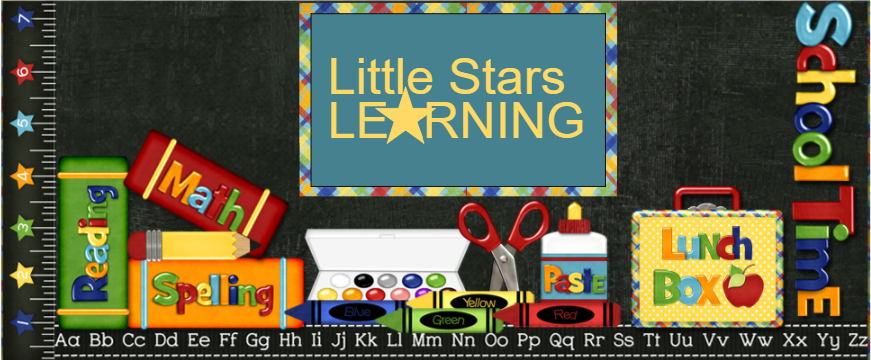While this is a manipulative, self-directed learning activity, and available for play, by the children of every age, since it is an awesome gross and fine motor activity, color learning activity and early counting activity...
 |
| Fine and Gross Motor, moving and twirling |
it's goal is ultimately to act AS AN ABACUS.
Addition, subtraction, multiplication, division.
And that's exactly how the preschoolers chose to immediately use it. Although, they have had previous experience with our classroom abacus, so it was an easy transition.
 |
| Counting by 5's |
I found a post from Happy Hooligans, after creating my abacus, in which she used pool noodles for a similar project. Even though my project was not influenced by hers, she still did it first and I acknowledge that.
HOW TO:
- Serrated Knife
- Tape Measure
- Scissors
- Lighter
- $5.00 (5) Pool Noodles
- $2.50 50 Feet 75 Pound Rope
- $3.00 (10) #208 or #210 Eye Hooks
I bought 5 pool noodles at Dollar Tree. These were about 2 1/4 inches wide when the tape measure was pulled tight against them. I went with the smaller diameter noodles to ensure that my young students would have plenty of space to manipulate the pool noodle "beads."
I cut them the same length as their diameter, easily getting the 20 beads out of each pool noodle that I needed. A serrated bread knife easily cuts them.
Since we already have pool noodle "blocks" both inside and outside, these could be dedicated to this purpose. To make them removable, cut a slit through the side.
To ensure the children could easily reach and manipulate the beads, I decided to do 5 lines of 20 across, rather than 10 lines of 10, like a normal abacus. To make the distinction between the two sides, I ensured that the colors of the noodles were offset.
I had the child with the average height raise her arms to determine the best height for the top string. For my students, that was 43 inches.
Since the noodles are 2 1/4 inches wide, I made the distance between the strings 6 inches.
I inserted the ten #208 screw eyes into the middle of each fence post, starting from the top measurement of 43 inches up from the ground. #210 eye screws are probably strong enough for most applications. I went a little heavier since I want this to last for years.
If the string isn't level, it will be more difficult for the children to manipulate the blocks, and they may constantly slide to one side. If you are just having this for play it may not be so important, but for use as an abacus, level is necessary.
I tied it off on the top left eye, threaded 10 each of two colors onto the string, wove the loose end through the opposite eye front to back, down and through the next eye down back to front, then repeated threading on 10 each of two colors of noodle beads, continuing until I reached the last eye. I cut the rope, tied it off, leaving a tail about 4 inches long, in case I need to untie it for tightening later, and sealed the end of the rope with an aim-a-flame/lighter.
Threading it produces much tighter string lines over all than doing them individually, which is important. The children are NOT nice with these. They pull on the lines, hang on them, etc., so it was very important that they be as taught as possible to begin with.
Wire could be used, but up against a fence I needed to ensure that the lines were not SO secure and tight that they could be used for climbing. These are not. Not that I don't have some monkeys, but there's just no way they can even get a foot hold on the thin line.
I purposefully used 10 of 2 different colors on each line so that the units of 10 were very apparent for skip counting by 10s. Also, when doing addition on each line, they can easily differentiate the two sides of their equation, and easily subtract one portion away for cross-learning.
These are a great visual and manipulative for skip counting.
Mr. G: "Nine and one is TEN!"
Me: "Yep, and if you slide the blue ones over, that's another TEN, and then you'll have ten plus ten which is TWENTY!"
Mr.G: [sliding the blue ones over then counting 1-20, looks up at me with wonder] "You are REALLY good at this game!"
Me: [laughing] "I've had a LOT of practice, buddy."



















What a great way to incorporate math and science into outdoor play. Thank you for sharing!
ReplyDeleteYou are welcome! It's a great in-expensive addition to our outdoor area. There's truly nothing you can teach inside that you can't teach outside, it's just finding the right things to add to the space.
ReplyDeleteThis is such a great idea! I was wondering how I can add this to my calendar wall by actually attaching it on my wall...I've seen some made using pvc pipes but they're not attached to the wall. Any ideas?
ReplyDeleteSorry I didn't respond sooner, Irene. I am just seeing your question. For indoors, you could use galvanized plumbing pipe with 90 degree wall connectors, or, if they won't be too rough with it, use wooden rings on towel holders. The pool noodles would be too fat, but wooden rings, napkin rings, smaller PVC cut into rings and painted with plastic paint, etc. would work.
Delete